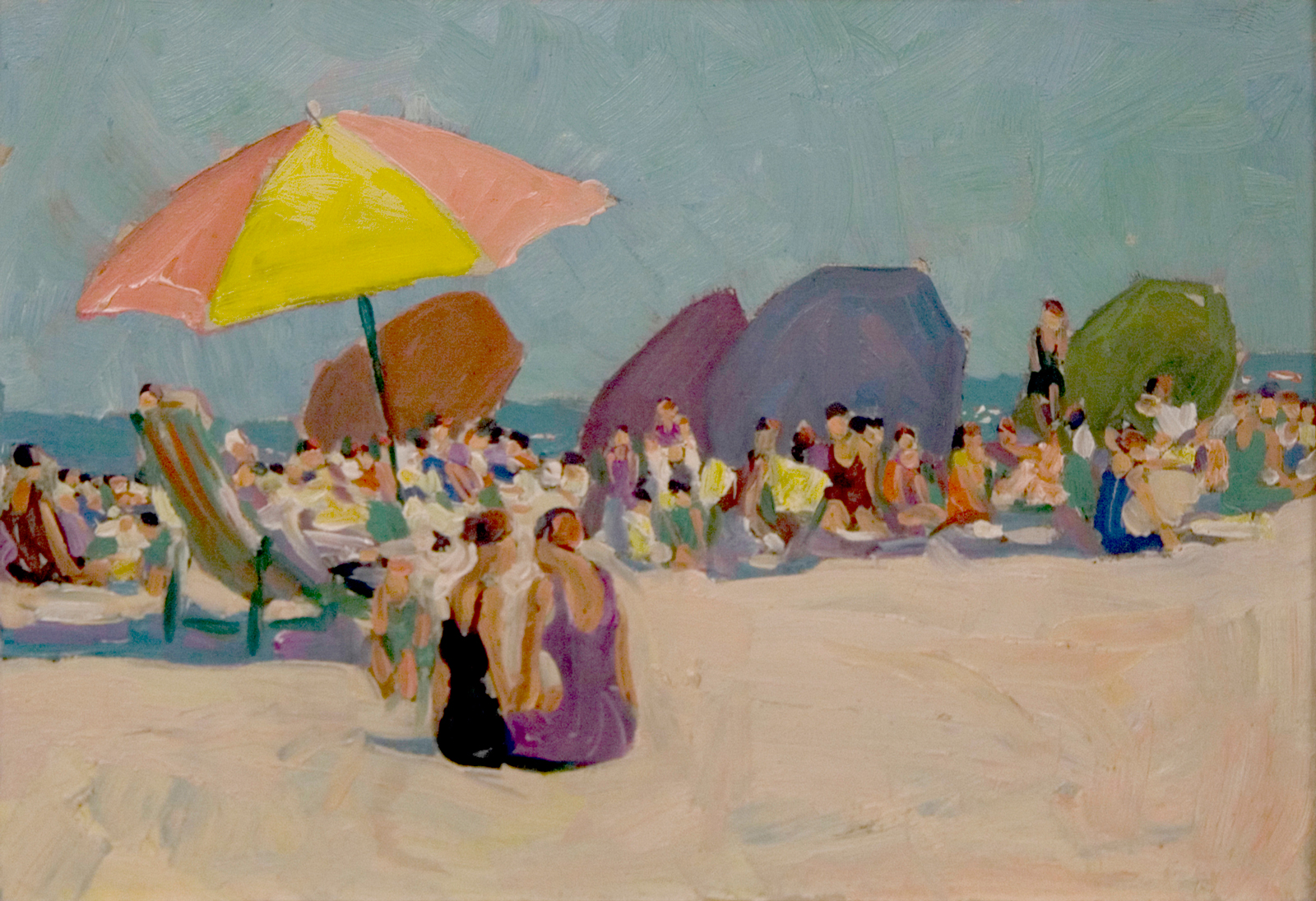Jane Peterson
Jane Peterson (1876-1965) was a self-described “cosmopolite” whose brilliantly-colored oils and watercolors held a critical link between Impressionism and modernism. Known especially for her paintings of coastal scenes in America and Europe and the lush gardens of Louis Comfort Tiffany’s Long Island estate, Peterson’s critics often described her work in masculine terms like “athletic” or “debonair.” On the question of gender and art, however, Peterson was firm: “Sex has nothing to do with it at all. Art is one activity where being a woman is neither a help nor a hindrance. Even a woman’s intuition means nothing when she is facing a canvas.”
Born Jennie Christine Peterson in Elgin, Illinois, Peterson found herself taking an art aptitude test at the 1893 Chicago World’s Fair, and doing well. Her parents, hardly wealthy, handed her $300 for a train ticket, tuition, and board after she was accepted to the Pratt Institute. She graduated in 1901 having made connections with wealthy patrons and maintaining a constant side hustle of teaching art.
By 1907 she had saved up enough to travel to Europe—England, Holland, Italy, then finally landing in Paris in 1908, right around the corner from Gertude Stein (where she attended Saturday evening salons alongside Picasso and Matisse). In 1908 Percival Lowell sponsored Peterson’s first solo show at the Société des Artistes Francais. In 1909 the same show, well-received in Paris, was brought to the St. Botolph Club in Boston, her introduction to the American public. One critic wrote in a review: “There is not a dull canvas in the entire collection.” By then she had changed her name to Jane, and was well on her way to becoming a full-fledged artist.
Between 1909 and 1924 Peterson had traveled across New England, Canada, Alaska, the Pacific Northwest, and to Egypt, Algiers, and Turkey, painting alongside artists like John Singer Sargent and Childe Hassam. She created patriotic works to benefit the American Red Cross during WWI, and showed at the 1915 Pan Pacific International Exhibition in San Francisco to benefit women’s suffrage. Her subject matter frequently included gardens, harbors, and slice-of-life scenes of upper middle class people at leisure in the city or at the shore, reflecting an Impressionistic bent; her bold color work and quasi-abstraction, however, were decidedly more modern.
In 1925 she married Moritz Bernard Philipp, a lawyer she’d met at the opera; the New York Times wedding announcement called her “one of the foremost painters in New York.” Philipp didn’t want Peterson to travel, so he bought a 5-story house across from the Metropolitan Museum of Art (where she’d later become a board member) and spent $80,000 building a light-filled, top floor studio for her. Her subject matter during their four-year marriage (Philipp died in 1929) was almost exclusively flowers.
In her later years Peterson spent summers in Ipswich, Massachusetts, falls in New York City, and winters in Palm Riviera. In 1938 the American Historical Society named her that year’s outstanding individual, making her the only the second woman to receive the honor. By the time Peterson died in 1965, she’d had over 80 solo exhibitions.
